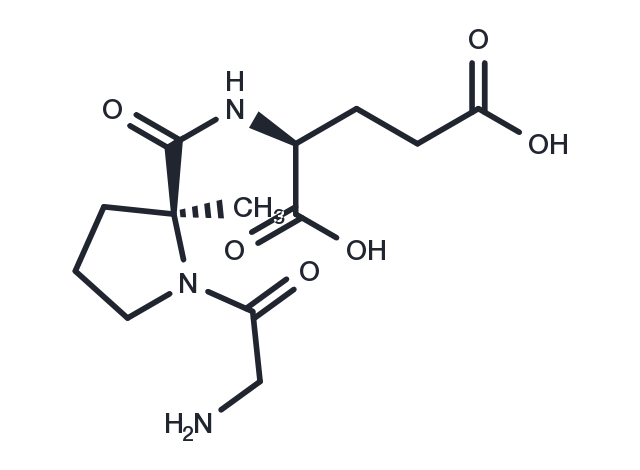keep away from moisture
Powder: -20°C for 3 years | In solvent: -80°C for 1 year

Trofinetide (NNZ-2566) is a synthetic analog of the endogenous N-terminus tripeptide. It has been shown to be neuroprotective in animal models of brain injury.

| Pack Size | Availability | Price/USD | Quantity |
|---|---|---|---|
| 1 mg | In stock | $ 98.00 | |
| 5 mg | In stock | $ 303.00 | |
| 10 mg | In stock | $ 459.00 | |
| 25 mg | In stock | $ 755.00 | |
| 50 mg | In stock | $ 1,060.00 | |
| 100 mg | In stock | $ 1,430.00 |

| Description | Trofinetide (NNZ-2566) is a synthetic analog of the endogenous N-terminus tripeptide. It has been shown to be neuroprotective in animal models of brain injury. |
| In vivo | Trofinetide treatment suppresses IL-1β expression in the injured brain hemisphere for up to 7 days post-PBBI. Trofinetide suppresses penetrating ballistic-like brain injury-induced inflammatory cell infiltration at 3 days following PBBI as compared to vehicle treatment. All doses of Trofinetide completely suppress the delayed occurrence of NCS as compare with the vehicle-treated animals. Trofinetide treatment produces significant reductions in the injury-induced up-regulation of IL-1β, INF-γ, and TNF-α expression. Trofinetide treatment significantly decreases the elevation of IL-6 (79%), E-selectin (81%), IL-1β (76%), and TNF-α (72%) mRNA levels in the injured hemisphere at 12 h post-PBBI, with maximal inhibition occurring between 12 h and 24 h. The high doses of Trofinetide (10 and 100 mg/kg bolus followed by continuous infusion) attenuate non-convulsive seizure (NCS) occurring beyond 2 h after permanent middle cerebral artery occlusion [1][2]. |
| Synonyms | NNZ-2566 |
| Molecular Weight | 315.32 |
| Formula | C13H21N3O6 |
| CAS No. | 853400-76-7 |
keep away from moisture
Powder: -20°C for 3 years | In solvent: -80°C for 1 year
H2O: 44 mg/mL (139.54 mM)
You can also refer to dose conversion for different animals. More
bottom
Please see Inhibitor Handling Instructions for more frequently ask questions. Topics include: how to prepare stock solutions, how to store products, and cautions on cell-based assays & animal experiments, etc.
Trofinetide 853400-76-7 Others NNZ-2566 NNZ2566 NNZ 2566 Inhibitor inhibit inhibitor
